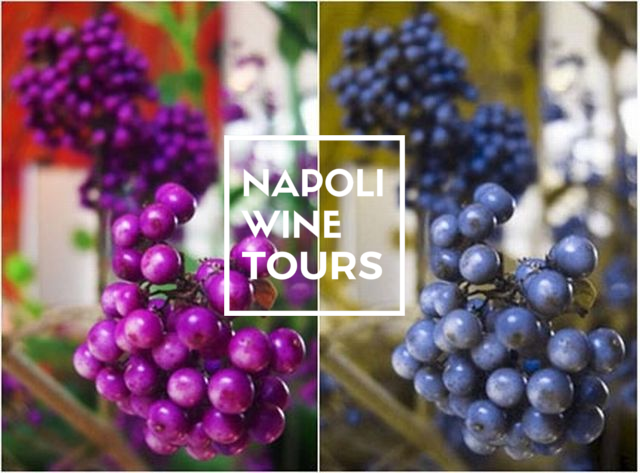
Contrary to the colour or the structure which are evident parameters, the perception of smells and flavours is very subjective. What is the cause? Well our brain and our experience!
A study conducted in France by the Institute for Agronomic Research and Frédéric Brochet (doctor of oenology and viticulturist) showed that expert sommeliers asked to blindly classify 18 wines, it turned out that for some of them, the wines deserved the first positions, while for others the bottom , and this happened either by analyzing premiers crus or table wines.
At this point we are allowed to say: The taste is not found in the bottle, but in the head of the taster!
In olfactory matters there is no “standard observer”. The smell of mint, for example, is perceived by some as anise, by others as liquorice: we are equipped with different tools to perceive odours. When we approach the nose to the calyx, the volatile molecules travel through our nasal cavities until they reach the olfactory mucosa; at the same time, once the wine is in our mouth, other aromas reach the same mucosa via the retro nasal route. On the surface of the latter, neurons emerge whose ramifications lead to the brain receptors. The moment the molecules attach themselves to the receptors they trigger an electrical signal transmitted to the brain. At this point the difference arises: two people do not have the same receptors, even if the genome contains for us 347 genes coding for proteins “the system involves a large number of mutations”. The conclusion of the biologist Patrick Mac Leod leaves no room for interpretation: “it is strictly impossible, among the billions of individuals who have populated and populate the planet today, to find two identical people on the olfactory plane”
Consequently, we are all sensitive to odours differently! Some of us do not recognize the violet in the wine, others instead are fortunate not to recognize the hint of cork. But the different perceptions increase even more when we move from the “nose” to the “mouth” where other physiological processes are triggered. The sapid (non-volatile) molecules attach themselves to the taste receptors that are sensitive to countless flavours: the traditional four – sweet, salty, sour, bitter-, the metallic flavor, the rotten, and the whole infinite range of flavours … Now, as for the olfactory receptors, the taste buds also differ according to the subject. Some are more sensitive to the notes of freshness, acidity while others will perceive sweet notes more clearly.
The role of sight also plays an important role in taste-olfactory perception. We are definitely used to starting our tasting by looking at the glass, examining the colour, the consistency, the clarity, the effervescence …
At the European Center of Taste Sciences in Dijon many studies have been done in this regard and it is difficult to distinguish a red wine from a white one during a blind tasting, or you can get to the point of recognizing the characteristic hints of a red wine in a white that was simply dyed.
Can the emotional factor influence our judgment? This question seems almost offensive if addressed to a serious wine lover, but is instead more than legitimate.
Regardless of the olfactory and gustatory receptors, our brain can modify the taste! A study by the University of California carried out a test on a group of students also analysing their brain response using magnetic resonance imaging. He was subjected to 5 tastings (but the wines were only 3, therefore 2 were repeated) giving them as information only the price of the wine (some of which were falsified – $ 90 wine proposed as $ 10 and vice versa). Now the result is surprising: not only did the subjects give higher marks to the “most expensive” wines but in them, during the MRI, a part of the brain associated with pleasure was activated, the median orbital-frontal cortex.
So there is no doubt that the context changes the way our brain shapes our taste … just as we already knew that memories and the mood mark the memory we have left of a wine.
We tried to test these theories by comparing the perceptions of two sommeliers (Andrea and Virginie). Two different wines were chosen: a young Verdicchio di Matelica with a price range of <10 € and an Aligoté di Bourgogne triple A with a price range between 20 and 30 €;
let’s see the sesulys:
Verdicchio di Matelica DOC
Supèra 2019 vol. 13
Grape variety: Verdicchio
Colour: straw yellow with greenish reflections
Nose (Andrea) the perception of minerality prevails. Not very intense
Nose (Virginie) the perception of the herbaceous with a note of hay. Not very intense
Taste (Andrea) dry, fresh, sufficiently savoury, light, not very persistent. Perceived aromas of sage, and the minerality with the flint is confirmed.
Taste (Virginie) dry, fresh, sufficiently savory, light, not very persistent. Perceive aromas of citrus fruits, herbaceous, and sage.
On the tasting of this fresh and young wine where a wide aromatic range was not expected, the impressions were unanimous except for the mineral note perceived in a much more marked way by Andrea.
AOC Bourgogne Aligoté
De Moor 2018 vol. 13
Grape variety: 100% Aligoté Bio
Color: straw yellow
Nose (Andrea): exotic fruit, white mulberry, pineapple, banana. Intense, persistent and fine
Nose (Virginie): yellow fleshed fruit, flowers, broom, and pine resin. Intense, persistent and fine
Taste (Andrea): dry, fresh, savory, persistent and structured. The olfactory perceptions are confirmed with the addition of white melon and quince.
Taste (Virginie): dry, fresh, savory, persistent and structured. Here too the olfactory perceptions with the spice mix (nutmeg) are confirmed.
On the tasting of this second wine, also thanks to its olfactory richness, the differences were more evident. During the comparison, the wine evolved in the glass, both agreeing on perceiving the fruit transformed into jam. We were surprised by the fact that in looking for an aroma that was very evident but elusive, the union of 2 noses made the strength! Andrea suggested CEDRO, and Virginie confirmed CANDITO. So this glass closed on a long and persistent candied cedar.
To discover the tasting parameters and learn to taste a glass of wine in a technical way, contact Napoli Wine Tours! An expert sommelier will guide you through the 3 tasting stages!
